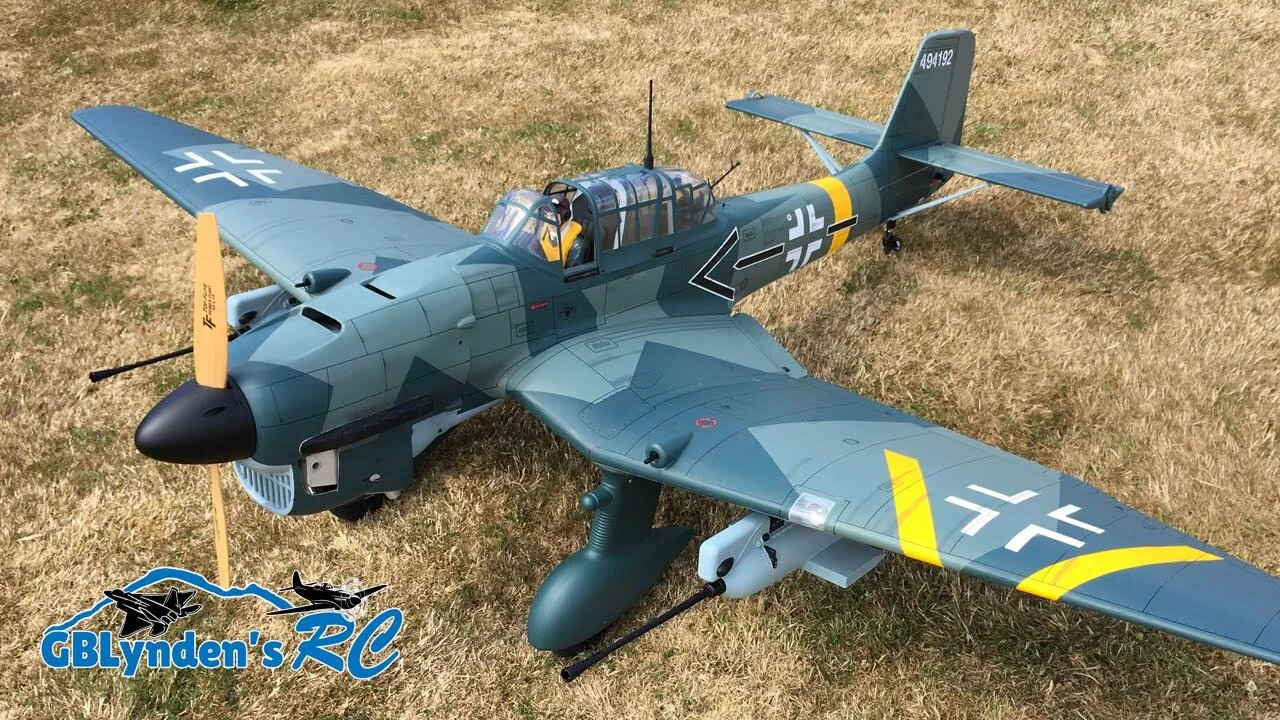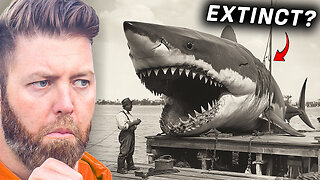Premium Only Content

Fun Flight With Robert's Giant Scale Phoenix Model Stuka Ju 87 61cc GasEP ARF 94.4 Inch RC Warbird
This is my buddy Pilot Robert's Giant Scale Phoenix Model Stuka Ju 87 61cc GasEP ARF 94 4 Inch RC Warbird at Warbirds Over Whatcom. The 2020 show should have been this weekend.
The links in this description are affiliate links. They give me a small commission on sales which helps support the channel and keep it independent: https://www.amazon.com/shop/gblyndensrc
This video was made using the equipment noted below and can be purchased using the links below:
RC Equipment Used In This Video:
- Phoenix Model Stuka Siren Dive Bomber: https://bit.ly/2kA6hXr
Spektrum IX12 Radio:
- Amazon: https://amzn.to/2XRxKoZ
- Hobbyzone: https://bit.ly/2W6UdfN
- Amainhobbies: https://bit.ly/33lAVIm
Video Equipment Used To Make This Video:
- Sony AX-33 Camcorder: https://amzn.to/3glZjw3
- SanDisk Extreme Pro SD Card: https://amzn.to/31blZJZ
Follow me on social media to keep up with all of the fun:
Facebook: https://www.facebook.com/GBLyndensRC
Instagram: https://www.instagram.com/GBLyndensRC/
Twitter: https://twitter.com/GBLyndensRC
This is how Tower Hobbies describes this plane:
"Siren of terror. With its wailing siren — dubbed the “Jericho Trumpet” — WWII Germany’s Ju 87 Sturzkampfflugzeug, or “Stuka”, inspired terror as effectively as it delivered bombs. This Phoenix Model reproduces the famous war machine with superb flying characteristics and an accurate scale outline. Made of factory-finished balsa and light ply, it's compatible with gasoline or electric power, and includes an full-depth cockpit with instrument panel and cockpit, plus scale sliding canopy and plastic bomb, antenna, spinner, and gun.
- Full-depth cockpit and instrument panel and pilot included
- Scale Sliding Canopy included
- Scale plastic bomb included
- Scale antenna, scale-shaped spinner, Scale Plastic Gun and much more.
- Strong Light Weight Construction
- Superb flying characteristics, plus an accurate scale outline"
Here is some more history on this plane:
The Junkers Ju 87 or Stuka (from Sturzkampfflugzeug, "dive bomber") was a German dive bomber and ground-attack aircraft. Designed by Hermann Pohlmann, it first flew in 1935. The Ju 87 made its combat debut in 1937 with the Luftwaffe's Condor Legion during the Spanish Civil War and served the Axis forces in World War II.
The aircraft was easily recognizable by its inverted gull wings and fixed spatted undercarriage. Upon the leading edges of its faired main gear legs were mounted the Jericho-Trompete (Jericho trumpet) wailing sirens, becoming the propaganda symbol of German air power and the so-called blitzkrieg victories of 1939–1942. The Stuka's design included several innovations, including automatic pull-up dive brakes under both wings to ensure that the aircraft recovered from its attack dive even if the pilot blacked out from the high g-forces.
The Stuka operated with considerable success in close air support and anti-shipping at the outbreak of World War II. It led air assaults in the invasion of Poland in September 1939. Stukas were critical to the rapid conquest of Norway, the Netherlands, Belgium and France in 1940. Sturdy, accurate, and very effective against ground targets, the Stuka was, like many other dive bombers of the period, vulnerable to fighter aircraft. During the Battle of Britain its lack of manoeuvrability, speed and defensive armament meant that it required a heavy fighter escort to operate effectively.
After the Battle of Britain the Stuka was used in the Balkans Campaign, the African and Mediterranean theatres and the early stages of the Eastern Front where it was used for general ground support, as an effective specialised anti-tank aircraft and in an anti-shipping role. Once the Luftwaffe lost air superiority, the Stuka became an easy target for enemy fighter aircraft on all fronts. It was produced until 1944 for lack of a better replacement. By then ground-attack versions of the Focke-Wulf Fw 190 had largely replaced the Stuka, but Stukas remained in service until the end of the war.
An estimated 6,500 Ju 87s of all versions were built between 1936 and August 1944.
-
 5:03
5:03
GBLynden's RC
1 year ago112MPH FMS Flash 850mm RC Speed Plane | Unboxing & Overview
169 -
 14:22
14:22
Forrest Galante
11 hours agoDoes The Megalodon Still Exist?
29.8K4 -
 26:48
26:48
Stephen Gardner
6 hours ago🔥BREAKING: Vladimir Putin JUST shocked NATO | Will only negotiate with Trump!
84.5K123 -
 2:45:39
2:45:39
Tundra Tactical
9 hours ago $20.15 earnedTundra Nation Live : The Worlds Okayest Gun Live Stream
43.6K1 -
 17:06
17:06
Professor Nez
7 hours ago🚨BREAKING: Elon Musk to BUY MSNBC!? Dems STUNNED by Brian Williams’ Viral Video!
36.7K41 -
![If You Smell LALALALA What CHiLi IS COOKING!!... #RUMBLETAKEOVER [Overwatch 2]](https://1a-1791.com/video/s8/1/e/s/X/3/esX3u.0kob-small-If-You-Smell-LALALALA-What-.jpg) 4:27:40
4:27:40
CHiLi XDD
9 hours agoIf You Smell LALALALA What CHiLi IS COOKING!!... #RUMBLETAKEOVER [Overwatch 2]
23.2K1 -
 LIVE
LIVE
Delnorin Games
9 hours ago🔴 Live - Star Citizen
1,521 watching -
 1:39:44
1:39:44
HELMET FIRE
11 hours agoDEADROP IS BACK!
132K8 -
 10:03
10:03
Tundra Tactical
13 hours ago $14.54 earnedBrandon Herrera Vies Bid for ATF Director!
83.9K15 -
 22:01
22:01
DeVory Darkins
1 day ago $34.71 earnedHakeem Jeffries SHUTS DOWN The View as Matt Gaetz Speaks out
73.5K121